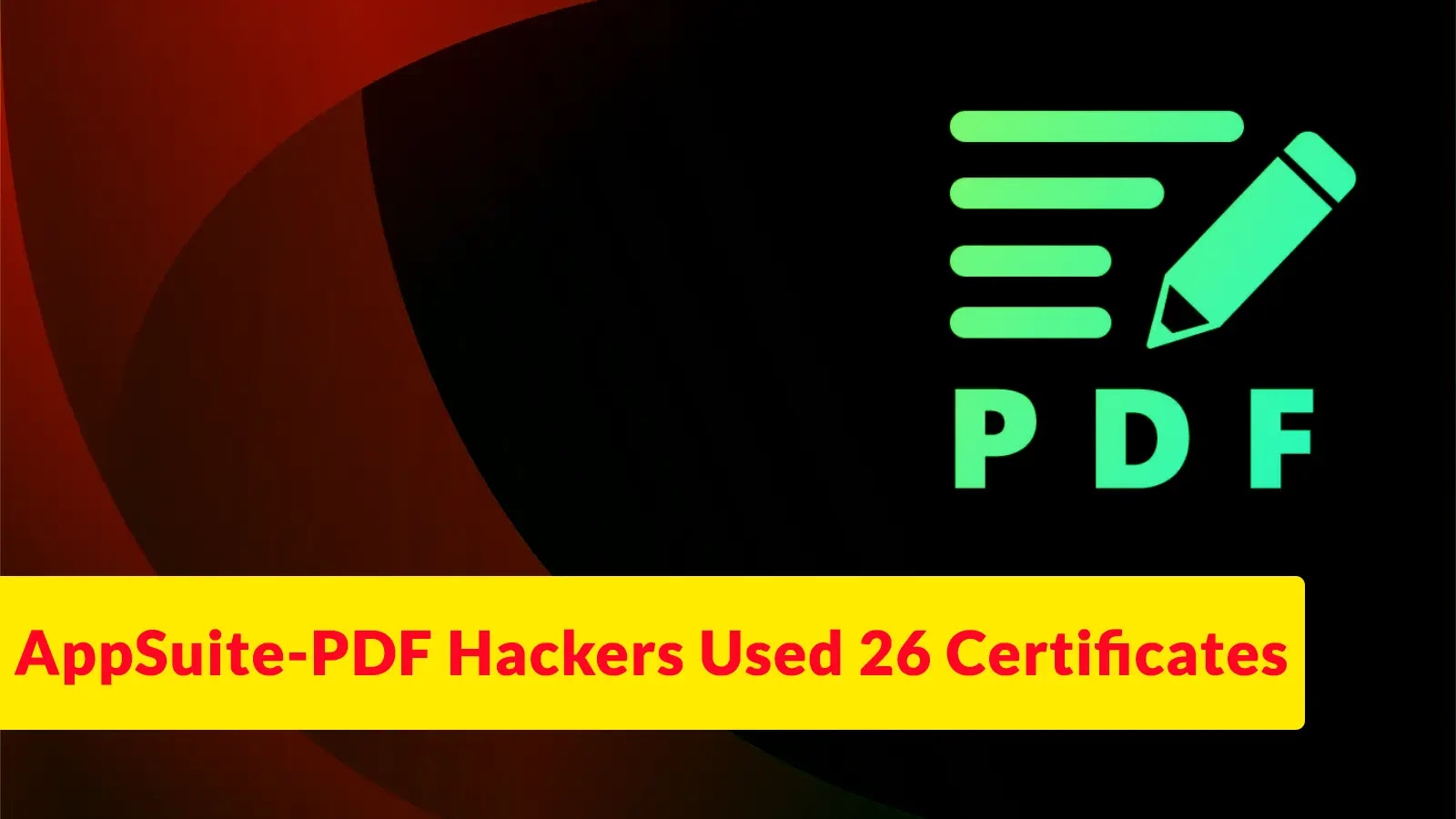
Actors Behind AppSuite-PDF and PDF Editor Used 26 Code-Signing Certificates to Make Software Appear Legitimate
In the complex landscape of cybersecurity, trust is currency. When that trust is systematically undermined by sophisticated threat actors, the integrity of our digital ecosystems is severely jeopardized. A recent alarming discovery has shed light on a multi-year campaign where malicious software, masquerading as legitimate applications like AppSuite-PDF and PDF Editor, has infiltrated systems by abusing no fewer than 26 code-signing certificates. This campaign, meticulously orchestrated by actors leveraging the BaoLoader malware family, represents a significant breach of digital trust and a stark reminder of the evolving tactics of cybercriminals. This analysis dives deep into the mechanisms of this sophisticated threat, its implications, and crucial mitigation strategies.
The Deceptive Cloak of Code-Signing Certificates
Code-signing certificates are foundational to establishing trust in software. They allow users to verify the authenticity and integrity of software, ensuring that it hasn’t been tampered with since its original signing by the developer. Threat actors have historically sought to compromise or forge these certificates to lend an air of legitimacy to their malicious payloads. In this particular campaign, the individuals behind the AppSuite-PDF and PDF Editor malware have elevated this tactic to an art form, procuring and abusing 26 distinct code-signing certificates over a span of seven years.
The core of their strategy involved obtaining these certificates through fraudulent business registrations. By presenting themselves as legitimate entities, they circumvented security protocols, acquiring valid certificates that allowed their malware to bypass many standard security checks, including those in Windows operating systems. This technique enabled their malicious software, tracked as BaoLoader, to appear as trusted applications, significantly increasing their chances of successful execution on target systems. The use of multiple certificates suggests a strategy of resilience and evasion; as one certificate is revoked or blacklisted, another is readily available to continue the malicious operation.
BaoLoader: The Malware Family at Play
While the referenced article does not delve into the specific functionalities of BaoLoader, the nature of the campaign strongly suggests its role as an initial access broker or a loader for further malicious activities. Malware families often serve as a gateway for subsequent stages of an attack, such as deploying ransomware, stealing sensitive data, or establishing persistent backdoors. Given the focus on PDF-related applications, it’s plausible that BaoLoader could be designed to:
- Download and execute additional malware payloads.
- Collect system information for reconnaissance.
- Establish command-and-control (C2) communication.
- Facilitate phishing attempts by dropping malicious documents.
The longevity of this campaign (seven years) underscores the persistence and adaptability of these threat actors. Their continued success in obtaining new certificates after previous ones were likely revoked or identified speaks to a determined and resourceful adversary.
Tactics, Techniques, and Procedures (TTPs)
The methods employed by the actors behind AppSuite-PDF and PDF Editor align with several well-documented TTPs in the adversary playbook:
- Digital Certificate Abuse: Exploiting the trust mechanisms of code-signing certificates to evade detection. This is a common tactic leveraged by advanced persistent threat (APT) groups and financially motivated cybercriminals.
- Fraudulent Registrations: Creating fake companies or impersonating legitimate ones to acquire certificates from Certificate Authorities (CAs). This highlights a potential weakness in the CA verification process that requires continuous vigilance and improvement.
- Application Impersonation: Masking malicious software as common, trusted applications like PDF editors to trick users into downloading and executing them. This often involves social engineering tactics and leveraging user needs (e.g., free software).
- Long-term Campaigns: Sustaining operations over extended periods to maximize impact and reconnaissance, adapting quickly to defensive measures.
Remediation Actions and Proactive Defense
Protecting against sophisticated campaigns that abuse code-signing certificates requires a multi-layered security approach. Organizations and individual users must implement robust defenses and maintain constant vigilance.
- Continuous Software Auditing: Regularly audit all installed software, especially those from third-party sources. Verify the legitimacy of signing certificates using tools like Microsoft’s SignTool or similar utilities.
- Endpoint Detection and Response (EDR) Solutions: Deploy EDR solutions capable of monitoring process execution, file system changes, and network activity. These tools can detect anomalous behavior even from signed applications.
- Application Whitelisting: Implement application whitelisting policies to allow only approved applications to run on endpoints. This significantly reduces the attack surface by preventing unauthorized executables, signed or otherwise, from running.
- User Awareness Training: Educate users about the risks of downloading software from unofficial sources, clicking on suspicious links, or opening attachments from unknown senders. Emphasize the importance of verifying software authenticity before installation.
- Patch Management: Ensure operating systems and all installed software are regularly updated with the latest security patches. Vulnerabilities in legitimate software also serve as attack vectors.
- Network Segmentation and Least Privilege: Segment networks to limit the lateral movement of malware and enforce the principle of least privilege, restricting user and application permissions to only what is necessary.
- Threat Intelligence Feeds: Integrate reputable threat intelligence feeds to stay updated on known malicious certificates and indicators of compromise (IOCs) associated with campaigns like BaoLoader.
- Hash-Based Detection: Maintain and regularly update blacklists of known malicious file hashes. While certificate abuse bypasses some trust, the underlying binary can still be identified by its hash.
Conclusion
The revelation of threat actors systematically abusing 26 code-signing certificates over seven years to deliver the BaoLoader malware is a grave reminder of the ongoing struggle in cybersecurity. It underscores the critical need for constant vigilance, robust security controls, and a distrusting mindset even towards seemingly legitimate software. As adversaries continue to innovate their attack methodologies, our defenses must evolve in parallel, focusing on a comprehensive, proactive, and resilient security posture. Verifying software integrity, investing in advanced detection technologies, and fostering a security-aware culture remain paramount in safeguarding our digital infrastructure from such insidious threats.





